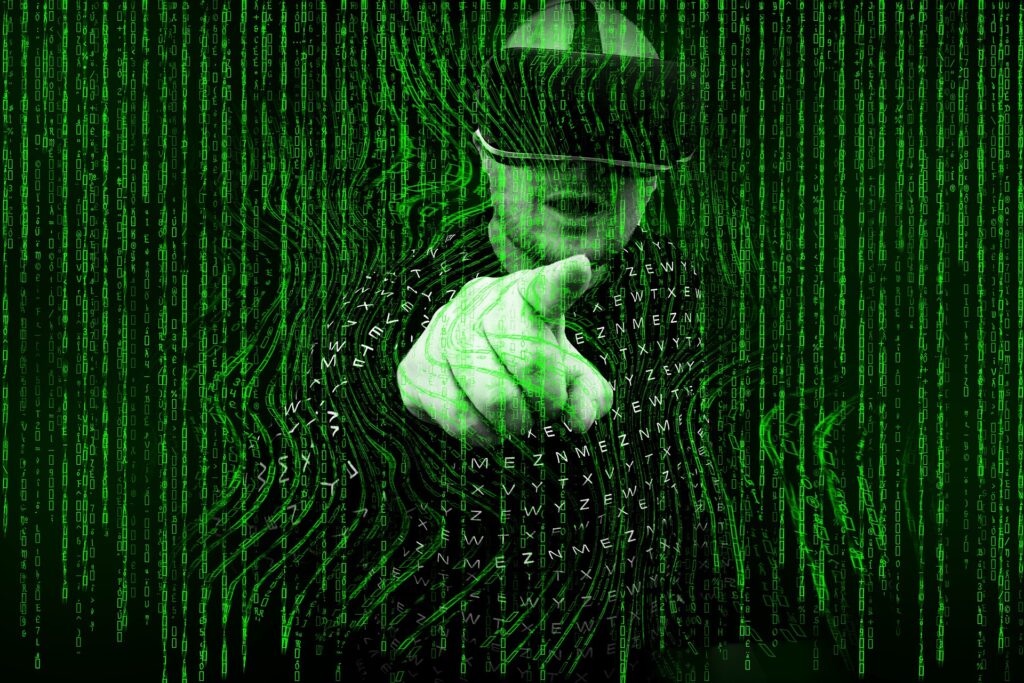
Daniela Farina : 17 November 2025 22:45
Many still maintain that hikikomori is an exclusively Japanese phenomenon. Yet, scientifically, numerous studies now confirm the existence of cases similar in characteristics to Japanese hikikomori in Spain, France, Italy, and the United States, countries with profoundly different cultures from Japan.
We are therefore talking about a social and global phenomenon destined to grow.
The first cases in Italy were diagnosed in 2007, and then spread and were increasingly identified as such. In 2013, the Italian Society of Psychiatry identified approximately 3 million cases between the ages of 15 and 40.
An estimate for 2018 puts 100,000 cases of hikikomori in Italy , and with the pandemic, the situation has become alarming. The Covid-19 health emergency and the resulting forced isolation to which young people were subjected may have played a significant role in this situation.
” The pandemic certainly had an impact,” Crepaldi continues, “because it pushed some kids to make the problem chronic, but not only that: we had cases of kids who were still attending school and having a social life before the lockdown, but after the lockdown they struggled to get out. In the period following the closure, it’s no coincidence that we saw a surge in requests for help .”
It’s important to underline that Japan remains the hardest-hit country overall, and the main reason lies in the competition that pervades all social contexts, from schools to workplaces.
The term hikikomori was coined by psychiatrist Tamaki Saitō, reflecting on the similar symptoms of an ever-increasing number of adolescents who showed lethargy, incommunicability and total isolation and a lifestyle characterized by a completely inverted sleep-wake circadian rhythm ” with night hours often dedicated to typical components of Japanese popular culture, such as a passion for the world of manga and, above all, the replacement of direct social relationships with those mediated via the Internet”.
What causes this phenomenon?
The sociocultural dynamics that potentially contribute to hikikomori are numerous, and identifying them all risks becoming a complex task that is prone to distortions, stereotypes, and generalizations.
We must therefore find a common thread, as all the causes have one thing in common: they contribute, to varying degrees, to increasing exposure and vulnerability to the pressure of social achievement, which we could consider the root cause.
Although with different intensity and modalities than in Japan, the pressures for social achievement are also intense in Italy and are fueled by a whole series of socio-cultural factors that can favor their development.
Some of these are common with Japan, such as the declining birth rate and the shift away from religious ideologies among younger generations. Others are specific to our context, such as the high rate of youth unemployment, which raises the barrier to entry for young people into the workforce and contributes to generating negativity about future prospects.
Then there are those aspects that cut across all economically developed countries of the world, such as the widespread diffusion of social networks, which shifts the level of social competition on a global scale and contributes to the spread of an image-based culture that is increasingly central to our lives.
The sources of pressure are therefore endless and vary from context to context, as well as from person to person. Some will suffer more from school pressure, others from work pressure, still others from peer acceptance pressure. It all depends on one’s personal disposition as well as one’s social, cultural, and family context.
Through withdrawal, hikikomori essentially seek to escape these pressures, which have become unbearable over time, and to distance themselves from competition. It is precisely the different sources of pressure that determine the different ways in which the phenomenon manifests itself, depending on the sociocultural context.
To give a concrete example, it seems that in Italy young hikikomori do not isolate themselves completely within their own homes, but maintain a relationship, albeit conflictual, with parents and relatives.
Japanese hikikomori, on the other hand, tend to withdraw completely, cutting off any direct relationship, even with family members.
This difference may be due to the fact that for young Japanese, parents culturally represent a stronger source of social pressure than Italian parents do for their children.
The same argument applies to all the differences that exist between one nation and another, but not only that, but also to those found between regions and urban settings.
If the pressure of social achievement can be identified as the root cause, that is, the common thread that connects all cases of voluntary social isolation, it must be clarified that it is only the fuel. The fire, that is, the dominant emotion that lies at the basis of the choice to withdraw is fear .
The fear of failure, the fear of being judged for one’s failures, the fear of not living up to others’ expectations, the fear of not being able to achieve goals that one believes are within everyone’s reach.
Often, they are intellectually gifted children who, from an early age, have become accustomed to receiving attention and compliments, thus building a self-identity that reflects the feedback they receive. If, for any reason, the gap between their ideal self and reality is too wide, the pressure to achieve the idealized model increases, along with the fear.
Part of our identity is shaped by how we perceive ourselves through the gaze of others, what sociologist Charles Horton Coley called the “reflected self.”
Thus, the pressure to achieve increases the fear of social failure, which in turn can activate, in the most vulnerable and predisposed individuals, that primordial defense mechanism triggered by the perception of danger: escape. In this specific case, the danger is the judgment of others, while escape takes the form of self-absorption. Home is the lair that allows this danger to be reduced.
Another key emotion is shame , which is not a primary emotion like fear but rather a socially based one. It involves some aspects of self-evaluation that we discussed previously.
Hikikomori try to avoid all situations that might trigger a social control mechanism, that is, a comparison between their personal level of success and that of another person or group of people.
Comparison can be triggered in a social or private situation. For example, when we look at our friends’ photos on Instagram or Facebook, we inevitably trigger a social comparison between our situation and theirs.
Fear and shame are therefore two sides of the same coin. Two emotions that coexist and merge into a single feeling: the fear of being judged.
This type of fear deflates and dissolves when faced with it, that is, when we realize it’s simply a misjudgment, nothing more than an illusion. Working through fears means mastering them!
In this way, the suffering of voluntary isolation can be transformed into potential energy, a desire for redemption, and an opportunity for personal growth.
When faced with danger, when faced with fear, there are always two ways to react: one is to flee and the other is to fight.
Hikikomori isolate themselves in the hope of escaping pressure, but unknowingly end up creating even greater pressure. Immobility creates a vicious cycle that wastes time and generates anxiety and fear; the more anxiety and fear, the more stuck they feel. This grip squeezes young people until one day the gap with their peers appears so wide as to be unbridgeable.
Fear, the adaptive emotion par excellence needed by humans to quickly activate their bodies in the face of danger, has today become an enemy.
If the child refuses to go to school, it’s best not to insist, but perhaps to develop a personalized learning plan that includes remote homeschooling. It’s definitely important to avoid coercive behaviors, such as turning off the internet or using force to prevent the child from locking himself in his room.
In Italy, cyberbullying takes on different characteristics and forms of expression than in Japan, yet even in our country, being subjected to cyberbullying leads hikikomori to develop a self-image that is different from others. According to some ISTAT data, the persecution is not limited to the school context but continues through new media, where the consequences are devastating because they persist over time.
There is no place to take refuge and one’s public image may be perceived as irreparably compromised.
The psychological repercussions of all this are not only immediate but can also have significant repercussions in the medium to long term.
The harassment suffered can generate real trauma with serious consequences on the person’s evolutionary process.
Cyberbullying and voluntary social isolation are therefore strongly correlated.
To reverse this trend, we must stop focusing exclusively on scientific and technological progress, as we must invest much more energy and resources in existential growth as human beings.
We should take social responsibility to talk about certain topics, raising awareness means being ready to break certain chains that could do us a lot of harm.
To escape the swamp and break the chains, an evolution of thought is necessary through the ability to become what Nietzsche called “the superman,” that is, a human being who can live with the awareness of the nonexistence of a predetermined purpose in life, managing to transcend social and ethical dogmas and expressing his creativity and his humanity without constraints or limitations.
Hikikomori isn’t just escape, it’s not just fear or shame; behind it all is a motivational void, a loss of meaning that seems to affect both the new generations and the internet in a transversal way.
There’s so much to say about this phenomenon, which is increasingly gaining popularity among young people in our country too. The website https://www.hikikomoriitalia.it/ is the main evidence of this.
To date, the Facebook group for parents of Hikikomori Italia has thousands of members from every part of the country, while the spaces dedicated to hikikomori include, in addition to the group, a forum and a chat room. They are visited by over 500 users, with approximately 10,000 messages posted daily, a level of participation that suggests a strong need for social interaction.
“Hikikomori long to connect with other people, but often can only do so with those who don’t judge them, in this case, people who have similar issues to theirs.” (Yong & Kaneko)
The internet is therefore fundamental, the only concern being that the online context remains a positive place and does not become a negative space.
The goal of the Hikikomori Italia project is to raise awareness of voluntary social isolation in our country and create a national network connecting all those who, for one reason or another, are interested in the issue. This allows for the sharing of experiences, information, and individual skills, accelerating the national understanding of the phenomenon and encouraging the implementation of the necessary tools to address this specific issue.
Our goal is to talk about some topics so that everyone is aware.
Digitalization is one aspect of that technological progress that over the last two centuries has evidently improved our existence and our life expectancy.
Digitalization, instead of joy, is often accompanied by fear.
Fear of online grooming, cyberbullying, cyber suicide, cyber racism, fear of internet addiction, fear of online scams, fear of electronic gambling, fear of physical problems related to computer use.
Digitalization by leveraging fear is doing a disservice to its own cause.
This does not mean that no desired effect does not have unforeseen side effects, and this is why it is important to be aware of both the positive and negative aspects of innovations.
We need to be aware so that we do not negatively impact our personal lives and their well-being.
 Daniela Farina
Daniela Farina